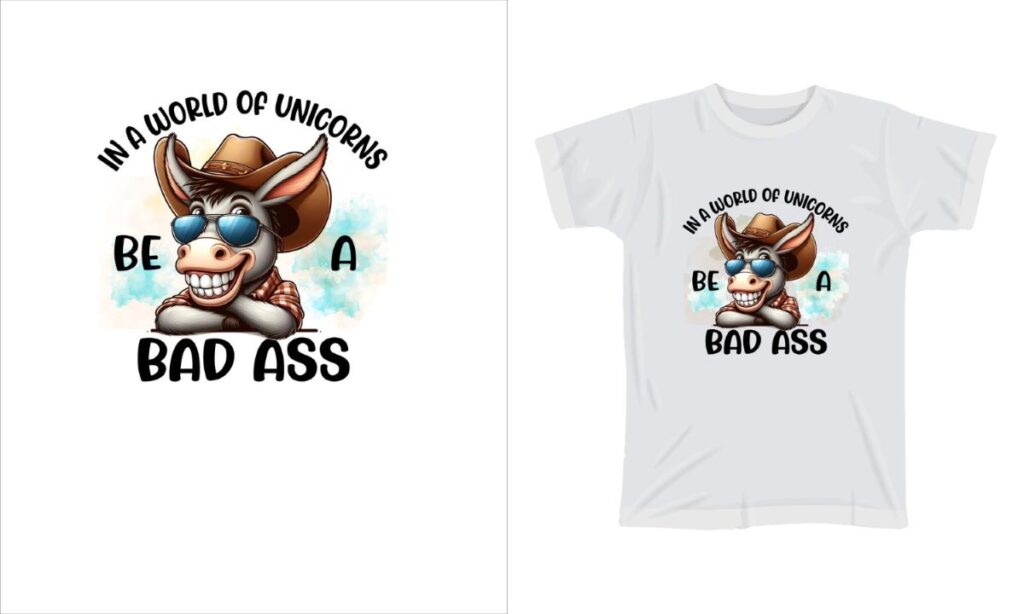UV DTF, an abbreviation for UV Direct to Film printing, is at the forefront of revolutionizing the printing industry through its advanced technology and impressive capabilities. As businesses and creative individuals seek efficient and high-quality printing methods, UV DTF stands out by merging the precision of UV printing with the versatility of DTF techniques. This innovative process not only guarantees vibrant colors and exceptional designs but also addresses the demand for sustainable printing options. The fusion of creativity and technology allows for a diverse array of custom prints, catering to various industries and markets. With the rising trend of eco-conscious practices, UV DTF is rapidly solidifying its position as a leading solution for modern printing needs.
Exploring the realm of UV Direct to Film printing unveils a transformative approach within the realm often referred to as hybrid printing technology. This method excels in delivering sharp, vibrant outputs, effortlessly merging different printing techniques for enhanced efficiency. As the demand for personalized and eco-friendly printing solutions grows, this technology increasingly aligns with such trends, showcasing its adaptability across various mediums. Known also as UV printing for DTF applications, this process opens new avenues for businesses by minimizing waste and maximizing quality, making it an essential consideration for those in the competitive landscape of print services.
Unpacking UV DTF Technology: A Game Changer for Printing
UV Direct to Film (DTF) technology represents a major leap forward in the printing industry. By integrating cutting-edge UV printing processes with the efficiency of traditional DTF methods, businesses can achieve stunning results faster than ever before. This technology utilizes UV inks that cure instantly when exposed to ultraviolet light, ensuring vibrant colors and sharp details. Furthermore, the method allows prints to be transferred to a wide range of substrates, which expands the horizons for creative possibilities across various industries.
The ability of UV DTF to streamline production workflows reduces the number of steps required in the printing process. This not only saves time but also enhances print quality, enabling businesses to deliver exceptional custom prints at a competitive pace. As the demand for high-quality, personalized designs increases, the relevance of UV DTF in catering to these needs becomes paramount. For graphic designers and marketers, this technology simplifies the process of creating promotional materials, allowing for faster turnaround times without compromising detail.
The Environmental Impact of UV DTF Printing
In an era where sustainability is at the forefront of consumer choices, UV DTF printing offers an environmentally friendly alternative to traditional methods. Unlike solvent-based inks that release harmful volatile organic compounds (VOCs), UV inks produced for DTF applications emit significantly fewer pollutants, making them healthier for both operators and the environment. Businesses wishing to adopt greener practices can leverage UV DTF to align with eco-conscious values while still meeting market demands for quality.
Furthermore, the process of UV curing reduces energy consumption compared to conventional ink-drying methods. As industries push towards sustainability, implementing UV DTF technology becomes a critical step in reducing their carbon footprint. Companies that prioritize eco-friendly printing solutions benefit from not only an improved public image but also a growing customer base eager to support sustainable businesses.
As consumers increasingly seek transparent practices from brands, those utilizing UV DTF technology can market their products as both high-quality and sustainable, which drives loyalty and attracts environmentally-conscious clients.
Versatility of UV DTF in Various Industries
One of the standout features of UV DTF technology is its remarkable versatility. The capability to print on diverse substrates—from flexible fabrics to rigid materials such as plastics and metals—empowers businesses to pursue a variety of markets, including apparel, electronics, and promotional items. This adaptability is a significant advantage in today’s fast-paced market, where trend shifts often require quick pivoting in production strategies.
For instance, apparel companies can utilize UV DTF to create customized clothing and accessories, while manufacturers in the packaging sector can produce eye-catching packaging that enhances product visibility on retail shelves. Such flexibility not only broadens the service offerings of print providers but also positions them as key players in various sectors, allowing for tailored marketing initiatives to engage distinct audiences.
Enhancing Print Quality through UV DTF Technology
The superior print quality offered by UV DTF technology is one of its most compelling selling points. The instant curing of UV inks ensures that colors remain vibrant and true to their design, with a glossy finish that enhances the tactile appeal of printed materials. For businesses looking to create high-end promotional materials or packaging, meeting client expectations for aesthetics and quality is crucial, and UV DTF delivers without compromise.
Furthermore, the precision of UV DTF printing allows for intricate designs and fine details that capture attention and convey brand messages effectively. This high-definition output can be a competitive advantage in industries such as advertising and packaging, where the visual impact is paramount. Brands that harness the potential of UV DTF technology are able to stand out in a saturated market, creating customer loyalty through consistent quality and innovative designs.
Cost Efficiency of UV DTF Printing
Cost efficiency is a crucial factor in the decision-making process for businesses in the printing industry. UV DTF technology not only lowers operational costs but also maximizes output through rapid production capabilities. The quick drying time of UV inks allows for immediate handling and a faster turnover of printed products, enabling print providers to fulfill larger orders more efficiently.
Moreover, reduced waste generated from the streamlined production process translates to savings that can be passed on to clients. As more businesses look to optimize their printing operations, adopting UV DTF technology becomes a strategic move that boosts both profitability and service delivery. In a competitive landscape, this cost advantage can be the deciding factor for clients choosing between print service providers, making UV DTF an attractive option.
Future Trends in UV DTF Technology and Its Implications
The future of UV DTF technology looks promising, with innovations on the horizon that aim to enhance its capabilities. From advancements in ink formulations that offer improved durability to new printhead designs that increase resolution and speed, continuous improvements ensure this method will remain relevant. As technological demands grow, print providers will need to stay ahead of trends to maintain their competitive edge in the market.
These advancements not only enhance printing efficiency but also open up new possibilities for creative applications within the printing industry. With potential developments in 3D printing integration and software that allows for greater customization, UV DTF will continue to evolve alongside consumer demands. Anticipating these trends enables businesses to adapt quickly, ensuring they are equipped to meet future challenges while providing superior service and quality to their clients.
Frequently Asked Questions
What is UV DTF printing and how does it differ from traditional printing methods?
UV DTF printing, or UV Direct to Film printing, combines traditional DTF technology with UV printing advantages. Unlike conventional methods requiring multiple processing stages, UV DTF simplifies production by directly applying UV inks onto a film, ready for transfer to various surfaces. This innovation leads to higher quality, vibrant colors, and a wider range of materials.
How does UV DTF technology promote sustainable printing practices?
UV DTF technology supports sustainable printing efforts by utilizing UV inks that generate fewer volatile organic compounds (VOCs) compared to traditional solvent-based inks. This eco-friendly approach not only reduces harmful emissions but also aligns with the increasing demand for green solutions in the printing industry.
What are the main benefits of using UV DTF for custom prints?
The main benefits of UV DTF for custom prints include superior print quality with vibrant colors, quick drying times, and the ability to print on a variety of surfaces, including fabrics, plastics, and metals. This versatility allows businesses to create highly personalized products, meeting customer demands for unique branding and designs.
What industries can benefit from UV DTF technology?
A wide range of industries can benefit from UV DTF technology, including apparel, promotional products, packaging, and signage. Its versatility allows businesses to accommodate multiple markets by quickly switching between different substrates and producing high-quality custom prints.
How is UV DTF shaping current printing industry trends?
UV DTF is reshaping current printing industry trends by prioritizing high-quality outputs, rapid production times, and sustainability. As more businesses adopt this technology, it generates greater competition, pushing advancements in printing techniques and further driving innovation across the sector.
What future developments can we expect in UV DTF technology?
Future developments in UV DTF technology may include innovations in ink formulation, improved printhead designs, and enhanced curing processes. These advancements are expected to increase production efficiency, expand the range of applications, and further enhance the user experience in the printing industry.
| Key Features | Description |
|---|---|
| Enhanced Print Quality | Superior print resolution with vibrant colors and glossy finish. |
| Versatility | Ability to print on diverse surfaces like fabrics, plastics, and metals. |
| Sustainability | Emits fewer VOCs than traditional inks, promoting eco-friendly printing. |
| Cost Efficiency | Rapid drying times lead to quicker production and lower costs. |
| Increasing Adoption | Rising trend among printing companies to adopt UV DTF technology. |
| Future Trends | Innovations that will enhance usability and capabilities are on the horizon. |
Summary
UV DTF is revolutionizing the printing industry by providing a state-of-the-art solution that integrates modern technology with practical applications. This innovative printing method enhances print quality, versatility, and sustainability, catering to the growing demand for customized prints. As companies increasingly adopt UV DTF technology, they are able to offer unique, high-quality products efficiently and eco-consciously. With the continual advancements and innovations within this field, UV DTF is set to become a cornerstone of modern printing, paving the way for businesses to thrive and satisfy consumer demands.



